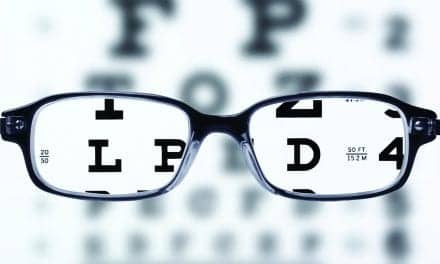New possibilities for fine tuning hearing instruments and meeting specific patient needs are now available through special digital features that assess your patient’s preferences in specific listening situations. These features allow for more focused communication between the hearing instrument wearer and the dispensing professional.
With DataLogging and User Preference Tuning, gain (volume control) changes made by the patient in daily life are analyzed, and appropriate fine-tuning suggestions are made by the fitting software. The hearing care professional is provided with this objective data, allowing him/her to interpret client complaints in a more unambiguous manner, then come up with more efficient intervention strategies. This reduces time-consuming repeated visits and contributes to an effective and satisfying fine-tuning process.
Furthermore, data on average wearing time and manual program selection are collected and displayed during the follow-up appointment. This allows for targeted counseling of the client, and may also provide important outcome indicators for hearing aid satisfaction and benefit.
This article details the new DataLogging and User Preference Tuning features found in the Phonak Savia hearing system, and provides information on why these features represent an important step in refining the hearing instrument fitting process.
Examining the Hearing Aid Fine-Tuning Process
It is commonly accepted that applying established prescriptive fitting formulas—such as DSL, NAL, or a manufacturer’s proprietary fitting algorithm—provides a good starting point for hearing instrument fittings. Setting the hearing instrument parameters according to these rules, however, does guarantee satisfaction for every patient, and some fine tuning will be needed in many cases. Additionally, an individual’s hearing needs often differ according to the specific listening situation.1 As a result, the gain has to be adjusted separately for each hearing program. Ideally, this is done by successive approximations, where the hearing aid settings are adjusted to better address the client’s preferences over time.2
Fine tuning may be based on a number of factors, including speech tests, soundfield thresholds, and real-ear verification measures, but most often it is based on subjective patient comments regarding their listening experiences in daily real-life situations.3 Figure 1 illustrates a scenario for the fine-tuning needs of a patient during a follow-up appointment. For this patient, the initial hearing aid settings were adjusted to meet prescriptive target gain, and these were verified with real-ear measurements. Subsequently, after the patient left the clinic for the “real world”:
• In a specific listening situation, the patient finds that he usually needs to decrease the volume of his hearing instruments. This indicates the need for fine tuning.
• During the follow-up appointment, the practitioner relies on the patient’s ability to accurately report his impressions for that particular listening situation. In turn, the patient’s answers need to be appropriately translated, then converted, into changes to the hearing aid gain. The goal, of course, is to eliminate the need for the client to decrease the volume in that listening situation. This process has to be repeated for each of the different hearing programs (if available) that relate to specific kinds of listening situations.

It is apparent that this approach has certain drawbacks and may result in an inaccurate adjustment of gain applied by the hearing care professional. These inaccuracies can result from the client supplying ambiguous information or the client not understanding the questions of the hearing care professional. Likewise, the descriptors the client spontaneously uses might be difficult to interpret. Finally, the task of transforming the client’s comments and complaints to actual hearing aid parameter adjustments is complex and ill-defined. The solution which is chosen might not always be the right one for the same complaint or the exact listening situation.
The result is a fine-tuning process that is not systematic and efficient. This is one reason why fitting hearing aids is often thought to be more of an “art” than a “science”; with most fittings, dispensing professionals are largely left to rely on the subjective question, “How does that sound?” In many cases, we have minimal objective data to guide our decision-making process or move toward the “optimal” gain setting(s) when trying to achieve a truly individualized fitting.
Field Study: Data Analysis on Real-Life Gain Changes
Analyzing trends in gain adjustment. A total of 20 patients who had four or more follow-up appointments were randomly selected from a database containing real-life fittings from various clinics. Of the 20 patients, 14 were fitted with BTEs and six with ITEs/CICs; 17 of the patients were fitted binaurally.

Figure 2 illustrates typical overall gain settings at the four follow-up appointments, and demonstrates the general trends in gain settings across successive fitting sessions (compared to the settings at the initial fitting). One might expect that the gain settings for each client converges to some specific “final setting” which represents the “optimal overall gain”; however, for most fittings this is not the case. Instead, the individual overall gain settings show no systematic trend across successive follow-up sessions; the adjustments appear almost random.
One might also expect that the amount of overall gain adjustment during the fine-tuning process decreases over time (ie, larger fine-tuning adjustments in the desired direction at the first follow-up appointment, and successively smaller, finer steps at later follow-up sessions). Again, this is not the case, as shown in Figure 3.

Discussion. The amount of overall gain fine tuning compared to the respective previous appointment remains almost constant across follow-up appointments, which indicates a suboptimal fine-tuning process without convergence to a “final setting.”
Several suggestions have been made to systemize the fine-tuning process and assure its quality. Kuk4 proposed the use of flow charts that describe in a logical sequence the potential solutions for specific patient complaints, thereby decreasing variability in the effectiveness of fine tuning a hearing aid. However, for each complaint, a separate, often complex flow chart is needed which might be impractical in many cases. Jenstad et al.3 suggested the use of an “expert system” to establish well-defined procedures to fine tune a hearing instrument when a patient reports common complaints. In fact, the authors found a high degree of agreement among the experts which they identified. However, such an expert system will not be useful in all cases, because clients cannot always adequately describe the problem(s) they are encountering with their hearing instruments in a way that is helpful or meaningful for the hearing care professional.
Using Objective Patient-Preference Data for Fine-Tuning
A novel approach to overcoming the above drawbacks is represented by the Phonak Savia hearing system. The DataLogging component of this system detects and analyzes volume changes made by the client in each of the four base programs (Calm situations, Speech in noise, Comfort in noise, and Music). Based on these changes, DataLogging computes a fine-tuning suggestion via a process called User Preference Tuning.
The fine-tuning suggestion is computed independently for all four base programs, which are chosen automatically by Savia SoundNavigation. For example, if the client consistently decreases the volume in noisy situations by an average of 5 dB, an overall gain decrease of the same magnitude for the noise program will be suggested by the individual Professional Fitting Guide (iPFG) software at the next fitting appointment (Figure 4).

The hearing care professional decides whether to act on the suggestions or not. There is no automatic change of the gain setting. Thus, the dispensing professional has full control over the fitting process.
DataLogging is designed to provide additional, objective information to the the hearing instrument fitting. In combination with directed questions to the client, it allows for a less ambiguous interpretation of the his/her comments and complaints.

Figure 5 illustrates how volume changes made by the client in daily life are analyzed by DataLogging to provide a fine-tuning suggestion to the hearing care professional. It can be seen how the fine-tuning suggestion follows the actual volume changes.
Patient acclimatization to new sounds is also considered within DataLogging. A sophisticated statistical analysis ensures that recent volume control adjustments made by clients have a higher impact on the suggested gain adjustments than client adjustments immediately following the fitting. This is to account for acclimatization effects. Shortly after the initial fitting, the client might find the hearing instruments too loud and decrease the volume. After awhile, however, the client has acclimatized to the sound level and does not need reductions any more. User Preference Tuning does not suggest a gain decrease during the early acclimatization period.

DataLogging analyzes volume changes, and client interactions can be directly related to fine-tuning intervention (namely overall gain changes). Although fine tuning of a hearing system includes many more aspects than just overall gain, by far the most frequent client complaints and descriptions are related to overall loudness.3 Thus, DataLogging allows the hearing care professional to carry out the fine-tuning process more effectively, and to avoid time-consuming gain setting approximations.
Tailor-made counseling. In addition to analyzing volume changes applied by the client, DataLogging informs the hearing care professional about the total wearing time of the hearing instruments since the last fitting session, the average daily use, and the percentage each of the activated programs has been chosen manually (Figure 6). This allows for tailor-made counseling of the client, as well as systematic identification and problem-solving, based on objective data. It also allows the clinician to point out the potential benefits of choosing custom programs manually in specific listening situations.
If, for example, the client complains about the sound quality in reverberant environments but does not use the customized program with EchoBlock, the clinician can see how often this custom program has actually been chosen by the client and counsel accordingly. As another example, if the hearing instruments have been used only very little, DataLogging can alert the dispensing professional, so the problem can be targeted, aiming at a more successful fitting which better meets the demands of the client.
In addition to fine tuning, previous investigators have reported that average daily use of hearing aids provide important indications of hearing aid satisfaction and benefit.5,6 DataLogging may be used as an important and valuable indicator for third-party payers and government agencies who seek outcome data regarding user satisfaction and benefit.
Summary
DataLogging and User Preference Tuning analyze volume control adjustments made by the client, yielding an appropriate fine-tuning suggestion. The features provide objective data for better interpretation of client complaints and more systematic intervention. They also reduce time-consuming repeat visits and contribute to an effective and satisfying fine-tuning process. Additionally, data on wearing time and manual program selection may support targeted counseling of the client by revealing objective evidence for more successful hearing aid outcomes.
| This article was submitted to HR by David A. Fabry, PhD, director of clinical research at Phonak US, Warrenville, Ill, and Juergen Tchorz, PhD, field study coordinator at Phonak AG, Stäfa, Switzerland. Correspondence can be addressed to David Fabry, PhD, Phonak, 4520 Weaver Parkway, Warrenville, IL 60555; email: [email protected]. |
References
1. Fabry D, Stypulkowski P. Evaluation of hearing-aid fitting procedures for multiple-memory “programmable hearing aids”. Paper presented at: Annual meeting of the American Academy of Audiology; 1992; Nashville, Tenn.
2. Beck DL. Programmable Instruments and successive approximations. Hearing Review. 1997;4(1):21-26.
3. Jenstad LM, Van Tasell DJ, Ewert C. Hearing aid troubleshooting based on patients’ descriptions. J Am Acad Audiol. 2003;14(7):347-360.
4. Kuk F. How flow charts can help you troubleshoot hearing aid problems. Hear Jour. 1997;52(10):46-52.
5. Humes L. Dimensions of hearing aid outcome. J Amer Acad Audiol. 1999;10(1):26-39.
6. Australian Office of Hearing Services. Report on the 2002 Top-Up Survey. Sydney, Australia: Commonwealth Department of Health and Aging; October:1-22.





